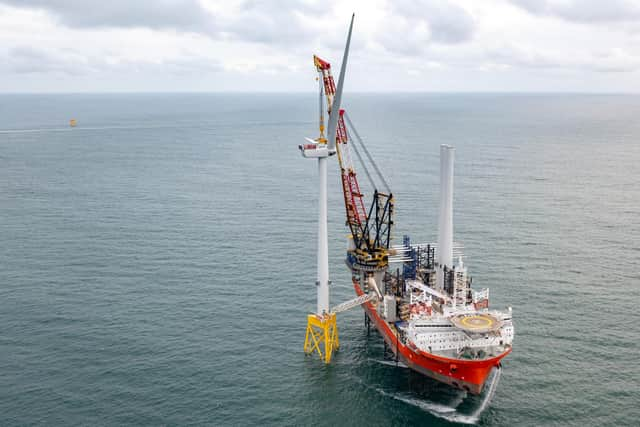Cost-of-living crisis: Why going green to keep the lights on in Scotland must be fair and affordable
Many householders are already struggling to heat their homes and keep the lights on due to rocketing bills caused by rising international gas prices.
This dramatic increase in power costs comes amid high inflation and an imminent rise in National Insurance contributions, sparking what the Chartered Institute of Environmental Health describes as a “cocktail effect” that could push many more people into fuel poverty and put them at risk of health conditions caused by living in a cold property.
Advertisement
Hide AdAdvertisement
Hide AdAll this coincides with a pivotal moment in the energy sector, as the nation moves towards green targets aimed at curbing climate change.


Coal-fired power generation has already ended in Scotland and the country is down to a sole nuclear plant after Hunterston B was switched off for the final time last month.
A major move to renewable electricity has already begun, but capacity will need to be massively increased to satisfy the imminent jump in demand that is coming as transport and home heating move away from oil and gas.
Around 37 gigawatts of additional renewable electricity from offshore and onshore wind farms is projected to be connected in the next decade or so.
But we’re nowhere near ready. Current transmission infrastructure cannot support it.
The latest Networks Options Assessment report concludes around £7 billion of investment is needed to upgrade electricity systems north of the border – stuff such as subsea cables, overhead lines, pylons, cables and substations – which will be critical to delivering UK and Scottish net zero commitments and renewable targets.
Meanwhile, many people are afraid that renewable electricity generation is not reliable. Readers of The Scotsman have expressed concern over the climate crisis, but also revealed serious fears over energy security.
Leaders must tackle the energy crisis and make sure the crucial transition to a low-carbon economy benefits Scottish workers and businesses and does not punish the most vulnerable in our society.
We need a fair and affordable way to keep the lights on.
Advertisement
Hide AdAdvertisement
Hide AdIt’s hard to care about global warming if you’re sitting in the dark, freezing to death.
A message from the Editor:
Thank you for reading this article. We’re more reliant on your support than ever as the shift in consumer habits brought about by coronavirus impacts our advertisers.
If you haven’t already, please consider supporting our trusted, fact-checked journalism by taking out a digital subscription.
Comments
Want to join the conversation? Please or to comment on this article.
